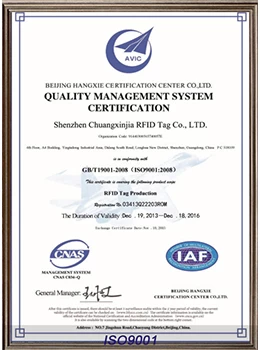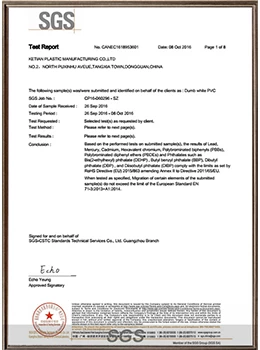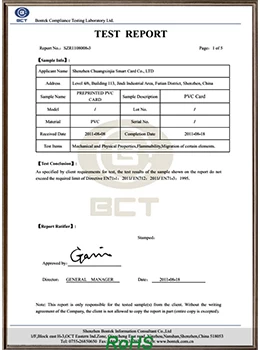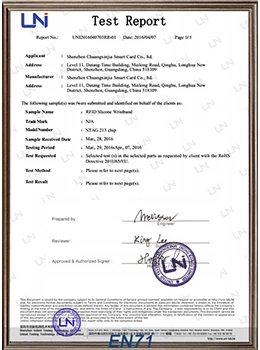Application of RFID tags in the field of commodity anti-counterfeiting
2018-07-23 11:21:07
In response to the emergence of counterfeit goods in the market, tamper proof RFID tags have played a big role in this field, which can effectively prevent counterfeit goods and enable consumers to purchase safe, secure and guaranteed quality products.
The exploration and application of RFID anti-counterfeiting technology will not only bring direct economic benefits to enterprises, but also effectively supervise the productionand operation of enterprises for relevant state management departments, crack down on and ban illegal production activities, maintain social order stability, and provide strong technical support for the sustainable development of the national economy. At the same time, it helps to improve management efficiency and reduce operating costs.
The application of RFID in anti-counterfeiting is to attach a very small chip to the required anti-counterfeit items. It is a research hotspot to use radio frequency technology to transmit the data stored in the chip to the system terminal for identification. It can input and process information without direct contact, and it is convenient and quick to operate. Can be widely used in production, logistics, medical, transportation and asset management applications that need to collect and process data.
The principle of anti-counterfeiting is: the product identification number (ID), that is, the anti-counterfeiting code is written in the RFID chip. This ID is unique in all aspects of production and sales; the chip is made into an electronic tag, and the electronic tag is attached to the product, make it an integral part of the goods. When the electronic label is “forced” to be separated from the commodity, the “integrity” of the commodity is destroyed, the commodity is considered to have been “consumed”, and the anti-counterfeiting end.
In the above steps, various technical means are used to ensure that the ID verification process is unforgeable and falsified. If the verification mechanism is forged, counterfeit goods will appear; if the verification process is tampered with, the genuine product will be "falsified" and disrupt the market. In this way, in the whole process of goods from production, circulation to consumption, there is only one commodity with the unique verification means identified by the unique ID, so as to achieve the purpose of anti-counterfeiting. The identification ID data of RFID electronic tags is read-only and cannot be changed.
In order to prevent counterfeiters from using fake electronic tags of the same ID, a unique secret information "key" associated with the ID can also be written in the security tag to identify the uniqueness of the verification process. Therefore, the anti-counterfeit tag ID is unique, the unique authentication information in the chip and the strict encryption authentication mechanism can make the anti-counterfeiting technology effective for a long time.
Some commonly used commodities, such as some famous brands of alcohol, cosmetics, medical and health care products, The emergence of counterfeit and shoddy goods will seriously affect the credibility of these brand-name goods, affecting the country's economic construction, and its anti-counterfeiting is very necessary. RFID anti-counterfeiting technology has broken through the ideas of anti-counterfeiting technology in the past, and adopted a new measure, which makes it difficult to forge, easy to identify, information feedback, password uniqueness, password confidentiality, one-time use, etc.
Compared with laser anti-counterfeiting and digital anti-counterfeiting, the advantage of RFID anti-counterfeiting is that: Each tag has a unique ID number, which is placed in the ROM when the chip is made. It cannot be modified and is difficult to copy; No mechanical wear, anti-fouling; The reader has a physical interface that is not directly open to the end user, ensuring its own security; In the aspect of data security, in addition to the password protection of electronic tags, some algorithms can be used to implement security management in the data section; There is a mutual authentication process between reader and electronic tag, etc.
To sum up the above: RFID anti-counterfeiting, no matter what method is used, it must ensure the safety of the identification instrument. Only in this way can we really play an anti-counterfeiting role.
The exploration and application of RFID anti-counterfeiting technology will not only bring direct economic benefits to enterprises, but also effectively supervise the productionand operation of enterprises for relevant state management departments, crack down on and ban illegal production activities, maintain social order stability, and provide strong technical support for the sustainable development of the national economy. At the same time, it helps to improve management efficiency and reduce operating costs.
The application of RFID in anti-counterfeiting is to attach a very small chip to the required anti-counterfeit items. It is a research hotspot to use radio frequency technology to transmit the data stored in the chip to the system terminal for identification. It can input and process information without direct contact, and it is convenient and quick to operate. Can be widely used in production, logistics, medical, transportation and asset management applications that need to collect and process data.
The principle of anti-counterfeiting is: the product identification number (ID), that is, the anti-counterfeiting code is written in the RFID chip. This ID is unique in all aspects of production and sales; the chip is made into an electronic tag, and the electronic tag is attached to the product, make it an integral part of the goods. When the electronic label is “forced” to be separated from the commodity, the “integrity” of the commodity is destroyed, the commodity is considered to have been “consumed”, and the anti-counterfeiting end.
In the above steps, various technical means are used to ensure that the ID verification process is unforgeable and falsified. If the verification mechanism is forged, counterfeit goods will appear; if the verification process is tampered with, the genuine product will be "falsified" and disrupt the market. In this way, in the whole process of goods from production, circulation to consumption, there is only one commodity with the unique verification means identified by the unique ID, so as to achieve the purpose of anti-counterfeiting. The identification ID data of RFID electronic tags is read-only and cannot be changed.
In order to prevent counterfeiters from using fake electronic tags of the same ID, a unique secret information "key" associated with the ID can also be written in the security tag to identify the uniqueness of the verification process. Therefore, the anti-counterfeit tag ID is unique, the unique authentication information in the chip and the strict encryption authentication mechanism can make the anti-counterfeiting technology effective for a long time.
Some commonly used commodities, such as some famous brands of alcohol, cosmetics, medical and health care products, The emergence of counterfeit and shoddy goods will seriously affect the credibility of these brand-name goods, affecting the country's economic construction, and its anti-counterfeiting is very necessary. RFID anti-counterfeiting technology has broken through the ideas of anti-counterfeiting technology in the past, and adopted a new measure, which makes it difficult to forge, easy to identify, information feedback, password uniqueness, password confidentiality, one-time use, etc.
Compared with laser anti-counterfeiting and digital anti-counterfeiting, the advantage of RFID anti-counterfeiting is that: Each tag has a unique ID number, which is placed in the ROM when the chip is made. It cannot be modified and is difficult to copy; No mechanical wear, anti-fouling; The reader has a physical interface that is not directly open to the end user, ensuring its own security; In the aspect of data security, in addition to the password protection of electronic tags, some algorithms can be used to implement security management in the data section; There is a mutual authentication process between reader and electronic tag, etc.
To sum up the above: RFID anti-counterfeiting, no matter what method is used, it must ensure the safety of the identification instrument. Only in this way can we really play an anti-counterfeiting role.










